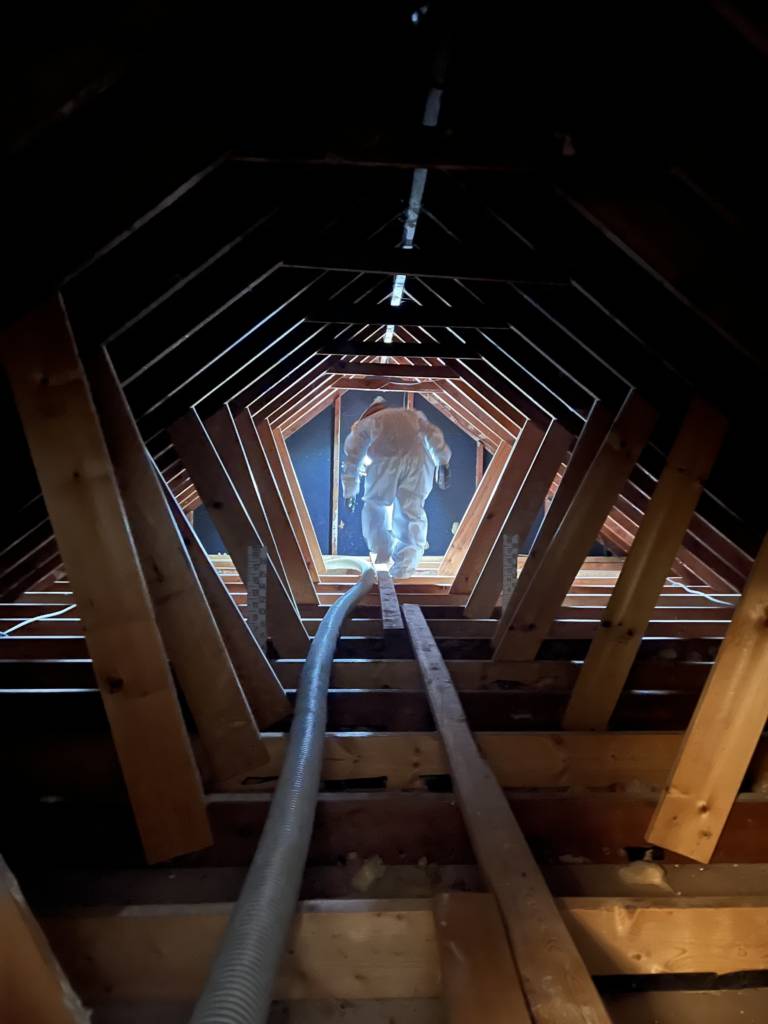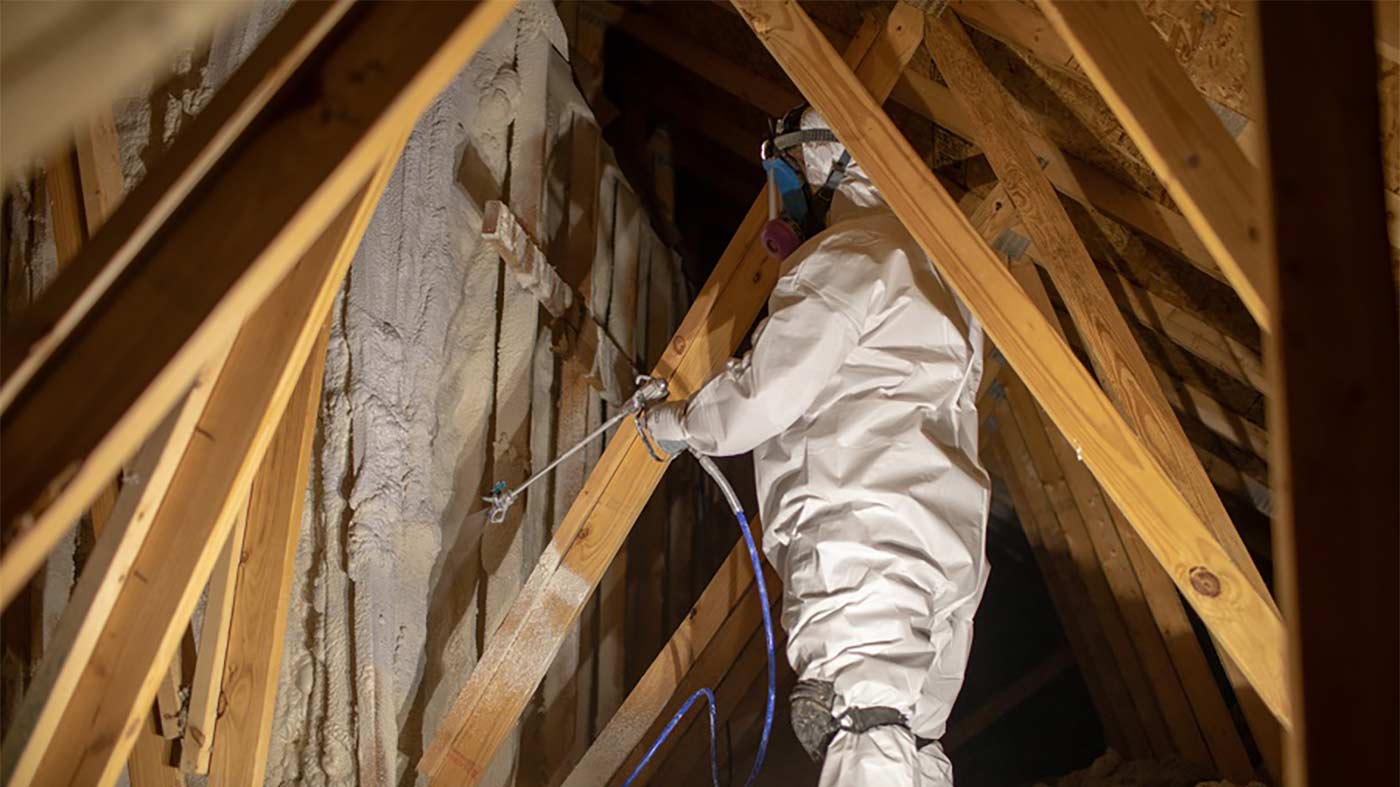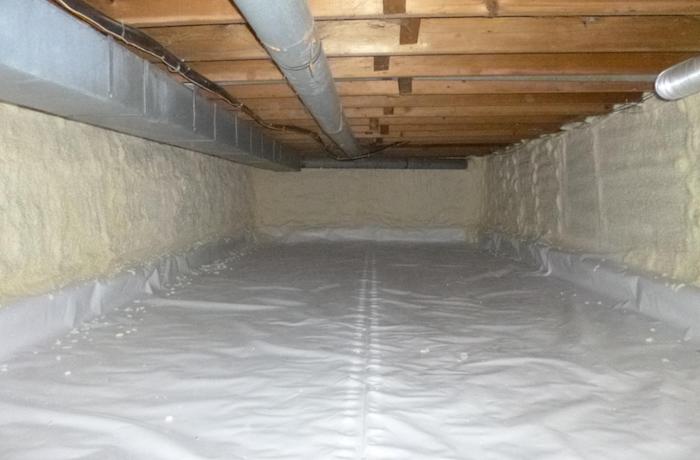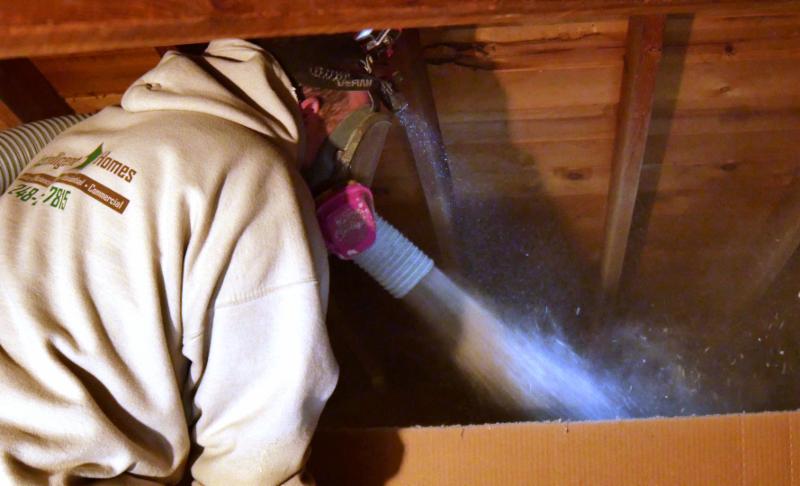Cellulose and Spray Foam Insulation Pros And Cons

Since 2009, we’ve insulated more than 3,000 homes here in the Metro Detroit area. Most of our insulation projects include either spray foam insulation or cellulose insulation. Here’s a question we get all the time:
What are the cellulose and spray foam insulation pros and cons?
This article breaks it down.
At a glance: Both are excellent insulation materials. The pros and cons of each type of insulation make them better for different applications (e.g. spray foam for attic slopes, cellulose for attic floors).
The insulation that makes the most sense for your home depends on the application, as well as your budget and a few other factors.
If you’d like a proposal to insulate your home in the Metro Detroit area, please give us a call at (248) 291-7815, or send us a message anytime. You’ll get a detailed proposal, complete with costs, cash incentives, and tax credits.
Comparison Chart of Insulation Types
You’ll find more details below, but first, a quick summary of cellulose and spray foam insulation pros and cons with recommended applications:
| Feature | Spray Foam | Cellulose |
|---|---|---|
| Installation Cost | Higher | Lower |
| Insulation Value | Higher | Moderate |
| Environmental Impact | Moderate | Higher |
| Water Resistance | High | Low |
| Air Sealing | Excellent | Moderate |
| Best for Attic Floor | ✓ | |
| Best for Attic Slopes | ✓ | |
| Best for Walls | ✓ | |
| Best for Crawlspace | ✓ |
Pros and Cons of Spray Foam Insulation
About Spray Foam Insulation
Closed-cell spray foam insulation is a high-performance material known for its superior insulation value and air sealing properties. Unlike open-cell spray foam, which we don’t recommend for homes in Michigan, closed-cell spray foam provides a strong barrier against moisture and air infiltration.
Spray Foam Insulation Pros
High Insulation Value
Spray foam offers one of the highest R-values per inch, making it an excellent insulator. This means it provides superior thermal resistance compared to other types of insulation.
Superior Air Sealing
It forms an airtight seal, which helps to prevent drafts and improve energy efficiency. This characteristic is especially beneficial in reducing energy costs and enhancing indoor comfort.
Water Resistant
Closed-cell spray foam is highly resistant to water, making it ideal for damp environments. This resistance helps prevent issues like mold growth and structural damage due to moisture.
Highly Durable
It adheres well to surfaces and doesn’t settle over time, maintaining its insulating properties for many years. This long-lasting performance ensures your home remains well-insulated for a longer period.

Spray Foam Insulation Cons
Cost
Spray foam is more expensive to install compared to other insulation materials. The higher upfront cost can be a barrier for some homeowners.
Complex Installation
Requires professional installation due to the specialized equipment and safety precautions needed. DIY installation is not recommended for spray foam. We're here to help if you need it: (248) 291-7815.
Environmental Concerns
May contain chemicals that have a greater environmental impact than other insulation options.
We only use spray foam with a global warming potential (GWP) of 1, which means it has the same impact on global warming as carbon dioxide. Additionally, it is GREENGUARD certified for indoor air quality, ensuring it meets strict standards for low chemical emissions. Not all closed-cell spray foams are created equal.
Spray Foam Insulation Applications
Attic Slopes
Ideal for insulating sloped areas where it can form a continuous barrier. This is particularly beneficial in preventing heat loss through the roof and improving overall energy efficiency.
When you insulate your walls as opposed to your attic floors, you can then use the floor of your attic for storage or perhaps living space. It essentially becomes additional space you can use, potentially expanding the square footage of your home if you condition the space.
Crawlspaces
Its moisture resistance makes it perfect for damp or wet crawlspaces. By insulating your crawlspace with spray foam, you can prevent cold floors and reduce the risk of pipes freezing, which enhances the comfort and safety of your home.

Got a project in mind?
Tell us about your project, and we'll send pricing in 2 minutes or less.
Pros and Cons of Cellulose Insulation
About Cellulose Insulation
Cellulose insulation is made from recycled paper products and treated with fire retardants. It’s an environmentally friendly option that provides good insulation and is particularly effective in certain applications.
Cellulose Insulation Pros
Environmental Impact
Made from recycled materials, making it one of the greenest insulation options available. This reduces the demand for new raw materials and supports recycling efforts.
Cost-Effective
Generally cheaper to install than spray foam. This makes it a budget-friendly option for many homeowners, allowing for more extensive or additional home improvements.
Good Insulation Value
Provides a decent R-value and can be blown into walls and attic floors effectively. It offers a reliable thermal barrier for a variety of applications, helping to maintain a comfortable indoor temperature.
Sound Dampening
Excellent at reducing noise transmission. This is particularly beneficial in creating a quieter indoor environment, making your home more peaceful and private.

Cellulose Insulation Cons
Moisture Sensitivity
When cellulose insulation gets wet from a roof or pipe leak, it will need to be replaced. Proper installation is essential to prevent this issue and maintain insulation performance. Without precautions, moisture can compromise the effectiveness of the insulation and lead to mold growth.
Settling Over Time
Can settle, reducing its insulating effectiveness unless properly installed. It's important to work with a quality insulation contractor to ensure that the cellulose insulation is installed at the proper depth in your attic and density in your walls.
Moderate Air Sealing
Doesn’t seal air gaps as effectively as spray foam. Additional air sealing measures may be necessary to achieve optimal energy efficiency, especially in drafty or older homes.
Cellulose Insulation Applications
Attic Floors
Works well when blown into attic floors, providing a thick layer of insulation. This application is ideal for maintaining a consistent temperature in the home.
Walls
Effective for filling wall cavities, especially in retrofits where walls need to be insulated without removing drywall. This helps improve the overall thermal efficiency of your home and can be a cost-effective way to reduce energy bills.
Summary
Choosing the right insulation depends on your specific needs and the areas that you're insulating.
Spray foam insulation offers excellent insulation value, air sealing, and moisture resistance, making it ideal for attics walls and crawlspaces in Michigan.
On the other hand, cellulose insulation is a more cost-effective and environmentally-friendly option that works well for attic floors and walls.
The bottom line: cellulose and spray foam insulation have strengths and weaknesses that make them better for different applications. If you have questions about which insulation makes the most sense for your home in the Detroit Metro area, give us a call anytime: (248) 291-7815.

Ecotelligent Homes
Since 2009, more than 3,000 Michigan homeowners have trusted Ecotelligent Homes to make their homes comfortable and efficient. If you want an energy audit, insulation, HVAC, or abatement services, give us a call anytime: (248) 291-7815. Satisfaction guaranteed.
Got a project in mind?
Tell us about your project, and we'll send ballpark pricing in 2 minutes or less.